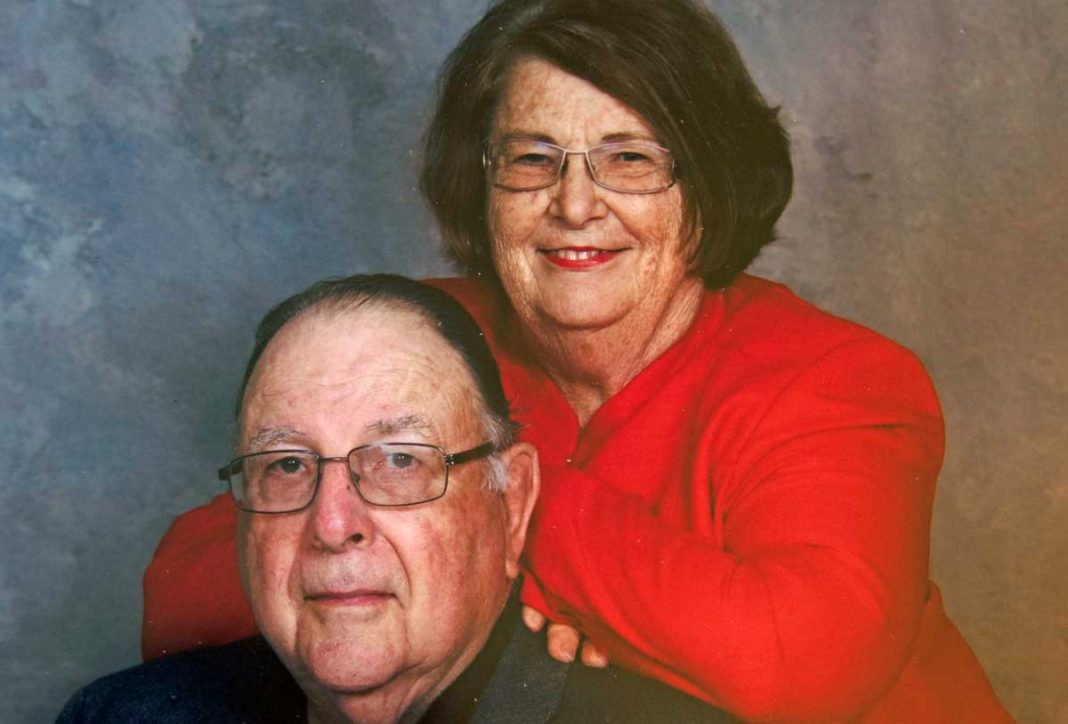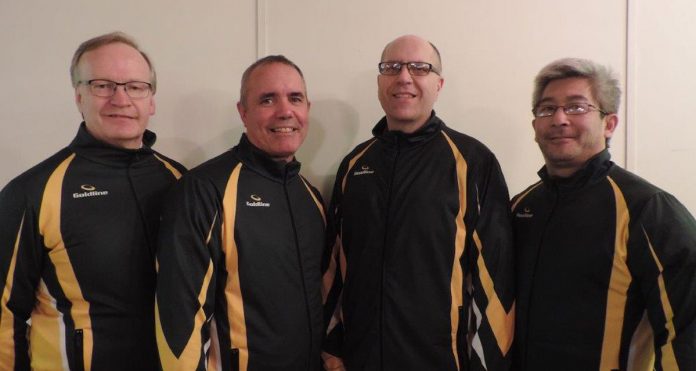George Purvis is one of a handful of people whose successes have helped put Manitoulin on the map. He joins a group of accomplished men who have used business acumen to fill an economic niche in a unique supply and demand cycle. George comes from a long-established line of commercial fishermen who have navigated the North Channel and Lake Huron. He has also served as United Church trustee, chair of the former Manitoulin Board of Education and president of the Ontario Fish Producers Association. He has filled the position of president of the Algoma Manitoulin Commercial Fisheries Association and been a member of Gore Bay town council. He has been a Canadian Coast Guard Auxiliary volunteer for 36 years. Two years ago, George became an appointed member of the Great Lakes Fisheries Commission for Canada and the United States. He has also added his expertise as an advisor to the Ministry of Natural Resources for five different provincial ministers. He is also a dedicated historian who was born on Christmas Day.
The writer met George at Burnt Island, the location of his fishing business. A small village, at one time a “company town” whose homes accommodated the Purvis Fisheries employer and their families, nuzzles the fish processing plant. One of these dwellings has been newly renovated to provide a comfortable habitat for George and Irene while at work. Their main home sits in Gore Bay up on the hill overlooking the village.
“Scotland is the origin of our family,” George begins. “All first-born sons have been called William. My great-grandfather was William Purvis born in 1832 in Arbroath, between Dundee and Aberdeen on the North Sea. Arbroath was the site of a hemp mill that made sails for the ships and tarps for the covered wagons. William’s mother, Mrs. John Purvis, ran one of the steam-powered looms there. At 12, great-grandfather was a cabin boy on a ship to Egypt. At 18 he travelled to India to work on a coffee plantation owned by the family. In 1851, William immigrated from Scotland to Quebec with brother John. William started working on the railroad. George, sister Susan, her baby and Anne Frost arrived later.”
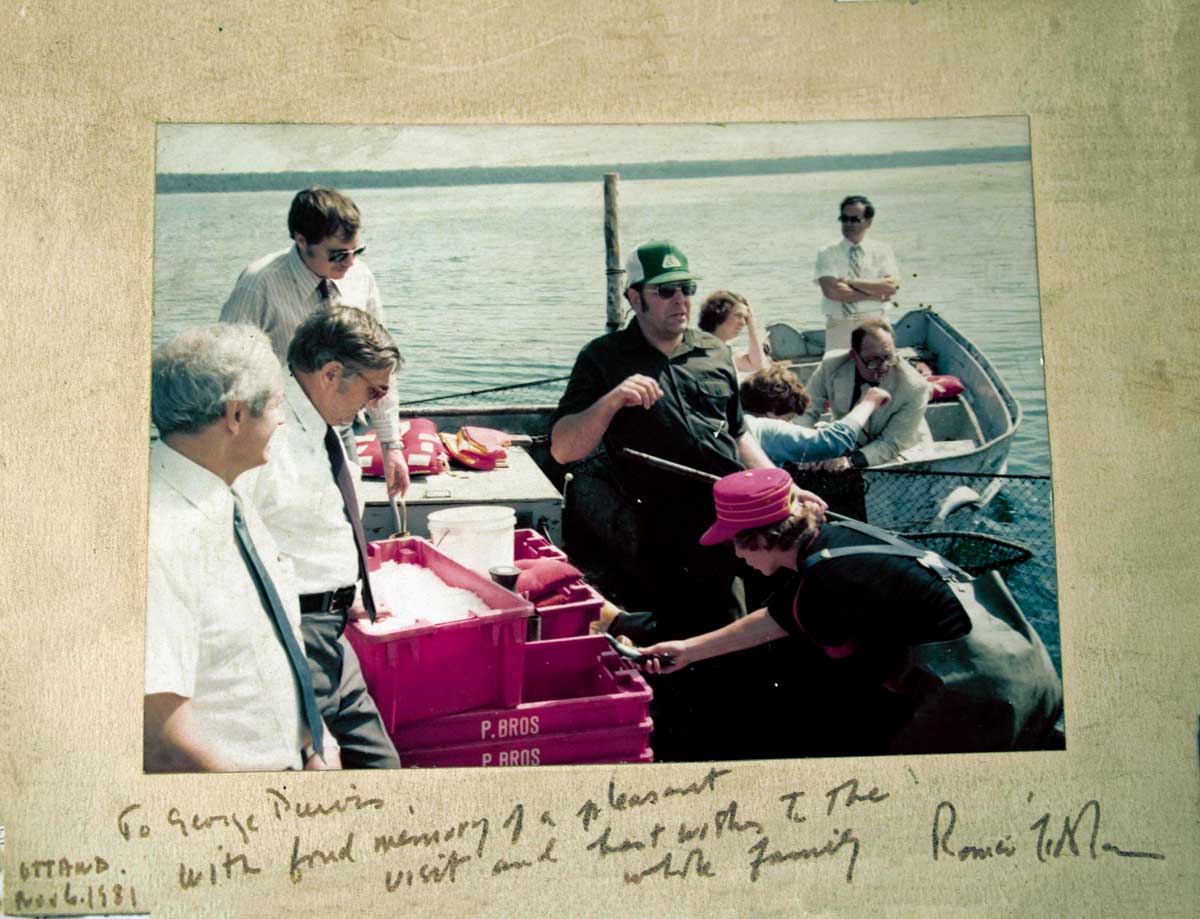
“William’s sights were set on Kincardine. He came by boat to Hamilton, by wagon to Guelph and then walked to Kincardine through the bush. His farm is still there today, on Concession 10, near the site of the Pine River Cheese Factory. He married Anne Frost in 1856. They had five sons and five daughters.”
William also established a local store in Kincardine that later became a post office. Recently a stamp was made to commemorate the 125th year of the site of the oldest post office in the same building, in Canada. The store, still selling hardware and groceries, was there for 151 years. “Entering the store today, one is transposed into a nostalgic time warp. The Mennonites still use the hitching posts at the front of the store.”
“William became the police chief and town foreman for Kincardine. His two brothers died of the flu in their 30s so only William was left to carry on the name. William later sailed the Great Lakes and was the first lighthouse keeper at Great Duck Island, in northerly Lake Huron, close to the Burnt Island fishing station, until the late 1800s. The wooden lighthouse had been built in 1877. William started the fishing business there in the 1870s. He had the Mackinaw, a sailboat, built. His first fishing tugboat arrived in 1887, from Detroit, from the Dry Dock Company at the time of Henry Ford. The tugboat took over from the sailboat.”
“One day, William had all five sons with him, fishing the shoals at the end of Duck Island. The Mackinaw capsized and all the boys were washed overboard. William rescued all five by pulling each one up and into the bottom of the boat. All survived but their young mother’s hair turned white after that incident and it stayed white for the rest of her life. William and John are buried in Kincardine. It’s interesting that there are Averys of the same generation interred there, near the gate. Irene’s an Avery.”
“Grandfather Alex built the first fishing tug, Purvis, in 1902, the Osprey and the Blue Fin in 1930. He also officially formed the Purvis Brothers fishing company. This included the same five boys who had been singly pulled out of the water by their father William. Each of the boys fished, mostly in the Manitoulin area, and one brother also set his nets in another province. Alex married Jenny Dixon and fished here all his life.”
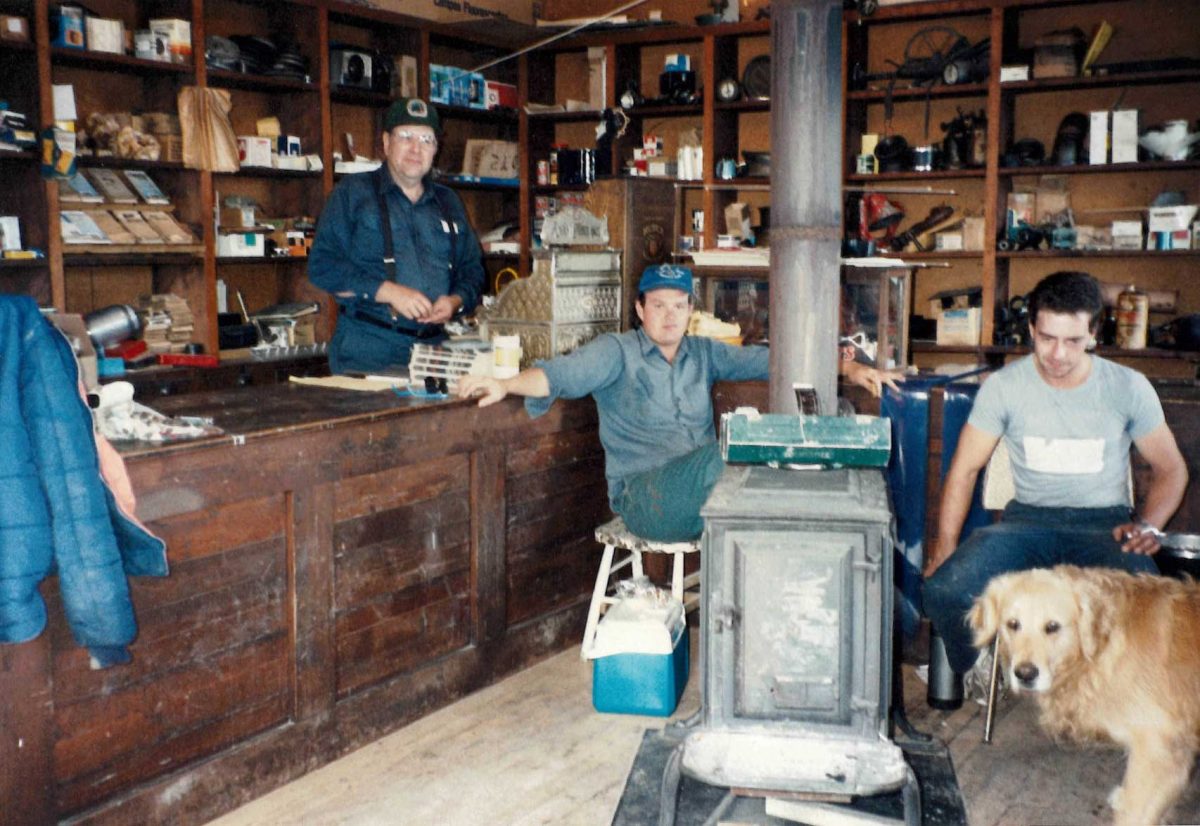
“To be more strategically located, the family moved the fishing business from Duck Island to Burnt Island, on the mainland, in 1921. At one point, all the old buildings on Great Duck Island burned save for the lighthouse which still stands, and one bunkhouse. There had been a real village there, with a grand piano in one home, and a school for the children on Outer Duck Island.”
“My dad George was born in Gore Bay. His dad Alex lived in the Hill House in Gore Bay. Today, this home is a bed and breakfast. When George was 17, he was the steam engineer on the Osprey. While in Cheboygan, Michigan he bought a watch with 17 jewels. The crew members told him that this was an odd number of jewels for a watch. Despite the naysayers, the watch is still operational today and son Drew has it now. Dad was also a curler and participated in many bonspiels in Northern Ontario. He went south too and took his own stones.”
“My mother, Margaret Ainslie, lived in Elizabeth Bay. Her parents died quite young and Margaret came to work for Mrs. Alex Purvis as a housekeeper. That’s how she met my dad. They married in Gore Bay. Her family comes from Scotland, near the border. She shared an early story about one of her ancestors who used to travel with the infamous Robbie Burns and would pay off all the ladies Robbie had met along the way.”
George Jr. was born on December 25, 1938 in Mindemoya, 11 years after his parents had married. “I never really had a birthday celebration. Mother made a Christmas cake and put candles on top of it.”
“As well as fishing, our family was raising mink, silver foxes and turkeys at Burnt Island. At one time we had 5,000 mink and 500 silver foxes. They would be skinned, and the hides cured and taken to The King Edward Hotel in Toronto. Charlie Robinson would hatch the turkeys and dad would raise them in cages, off the ground. The timing was exact, 28 weeks. If you fed the turkeys one week too long, that last week would eat up your profits. The birds would be New York dressed (that meant only the feathers were removed) and the whole bird would be placed into a wooden box with three other birds. The box would be trucked to Little Current and then bound for Toronto by train.”
“I liked school. We had three classrooms: Grades 1 and 2 in the first room, Grades 3 to 5 in the next room and Grades 6 to 8 in the third room. In Grade 7, our teacher and principal was Charlie McLean. I liked history but what I remember the most was trying to kick Mr. McLean in the shins during football outside. I don’t think it ever worked.”
“The high school was upstairs, and George O’Leary was the principal and the best teacher, as I recall. I liked all the subjects except Latin and French. One time a squirrel tail was tacked to the teacher’s seat and we all had to stay late until one student confessed. It was quite entertaining, when it turned out that the culprit was his own daughter.”
George played hockey for the Gore Bay High School team. “We won the Ontario Championship in Blenheim one year, for our level C (based on the number of students). The next year the championship was in Guelph and we lost the game and my front teeth.” As fate would have it, the fellow who accidentally knocked George’s teeth out, a week later, accidentally lost his front teeth too.
While George Sr. ran the fishery at Burnt Island, the American boats, Edna A and American Girl, arrived twice a week from Cheboygan, Michigan to pick up 100-lb boxes of fresh fish. A machine with big tongs lifted them on board. “I used to do the paperwork for dad. I also spent 10 summers on the Blue Fin, fishing with my uncle. Once I stepped backwards and fell down the coal chute, sustaining enough lacerations to require a multitude of stitches.”
After high school, George attended the University of Western Ontario. He got his Honours BA in business with minors in English and psychology. “I met Irene on a blind date set up by Shirley Jewell. I was very excited to see this pretty lady coming my way. I knew I was a lucky man.”
“In June of 1962 my dad died, two weeks after my graduation. It was a real heartbreaker. Irene had met him only once. I had to get back to Burnt Island to work. That fall, we both returned to Western. Irene finished her public health nursing diploma after graduating as a nurse and I returned to get my Masters in Business Administration, completing it in 1963.
“Three of us were enlisted to write a book for our professor. It would start with a questionnaire for corporations earning more than $500 million in sales. Computers were not available. We worked on it for a long time. I took the finished product to the professor. He browsed through it and threw it on the floor! This time we redesigned it, made it a bit riskier, but more effective. A lot of corporations got the new questionnaire and we wrote: ‘Long-range Planning in Corporations Earning more than $500 million in sales.’ The book has been in publication since then and revised in the last 10 years.”
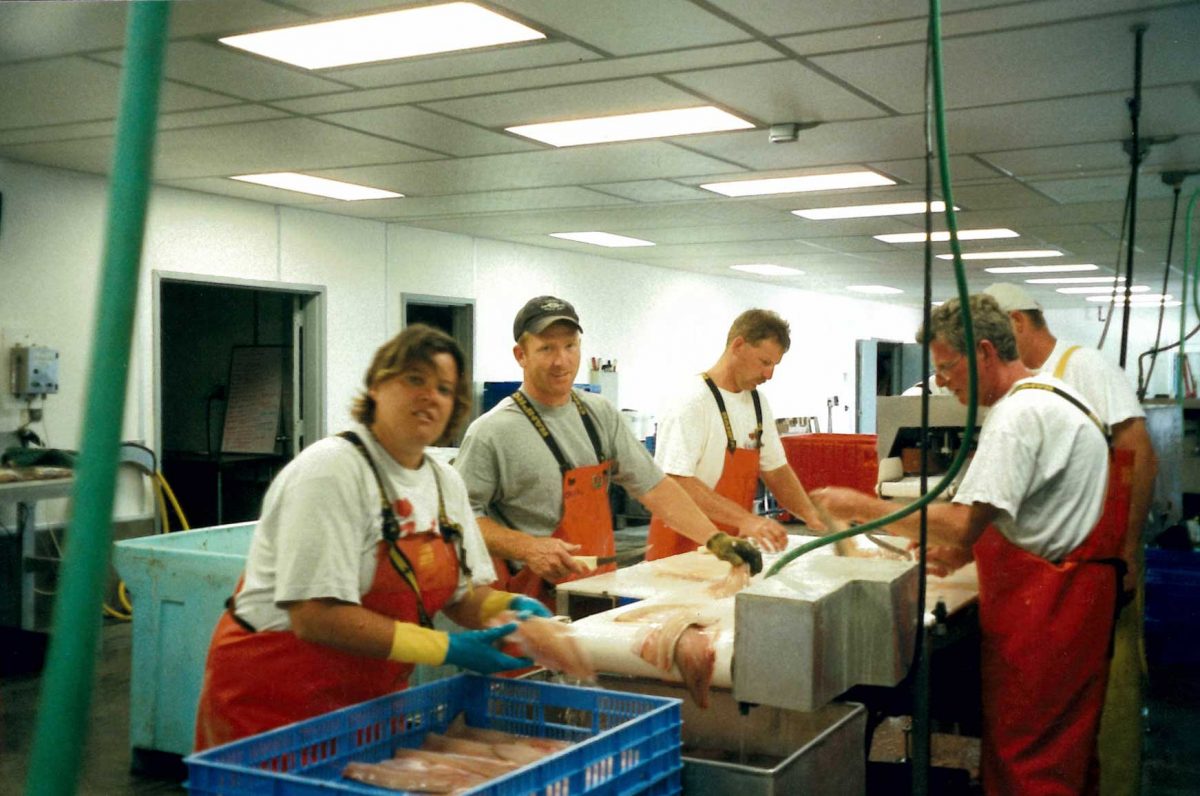
“While still at university, I had applied to and been hired by Algoma Steel to sell steel, but I was needed at Burnt Island. Irene and I married on July 18, 1964 on a scorching day. It was so hot, I had to offer an arm to Irene during the ceremony to keep her from fainting. We had a two-week honeymoon in the Laurentians and Lake Placid, New York. It was very enjoyable. That was the first and last time I managed to get two consecutive weeks off in summer.”
Irene soon met some ladies on Manitoulin and joined their social circle. “The fishery kept her busy too. She and Jane Pummell also boarded and cured all the fox and mink skins.” George and Irene were pleased when in the 1980s, Romeo LeBlanc gave an award recognizing ‘Sustainable Fishing Practices’ to the Purvis Fishery and three other organizations, including an Inuit group. “We would throw back all the small and game fish and tried to limit trapping fish that were not on our catch list.”
“(Daughter and son) Denise and Drew have both worked at Purvis Fisheries since they were 16, starting by selling fish from the truck. These days, Drew does many of the needed tasks, including office and computing work. He processes fish in the plant and runs one of the two trap-net boats a couple of days a week. Last, but not least, he also makes small repairs to the equipment. Denise is our salesperson. She sells the fish.”
“We have five boats including grandfather’s Blue Fin, the Andave H, the newer Purvis and the DD Purvis and the AA Purvis. It is getting really challenging to find enough people to crew these boats so we are limited to how many vessels can go out at one time.”
George’s expertise has been in demand. As advisor to five different Ministers of Natural Resources, he would make predictions about anticipated future events based on his experience and make recommendations as to how the minister might consider dealing with them. At one point, he was asked not to fish the sturgeon as they were getting scarce in the south. George had to import some of his sturgeon from Quebec.
The Ontario Fish Producers Association brought George on its board in 1975 and as president in the 1980s. “I travelled to Anchorage, Alaska to speak to the American Fisheries Society about individual transferable quotas to increase the safety and help manage the industry.” Luckily, Canada’s Ministry of Natural Resources was in attendance to hear George’s submission.
George has also been president of the Algoma-Manitoulin Commercial Fishermen’s Association from 1975 to 2017 when Denise took over. As an auxiliary volunteer for the Canadian Coast Guard for 36 years, George helps solve problems when the head office in Trenton calls. From 1982 to 1987 George was on the Gore Bay town council. “We built the Red Roof Pavilion and the arts and artisan building across from where the (Split Rail) brewery is now.” Mr. Purvis has also been a trustee for the Lyons Memorial United Church for years.
The Manitoulin Board of Education had George as a member for the building of the new Manitoulin Secondary School in M’Chigeeng in 1969 and as chair in 1980 and 1981. A new addition was also added to C.C. McLean Public School for Jr. Kindergarten. “Parents were upset initially, saying their children were too young for a half day at school, but over time, issues were resolved.”
For the last two years, George has been an appointed member of the Great Lakes Fisheries Commission, operating in Canada and the USA. “The cormorants are one of the issues we are discussing. The alewives are back so that means the cormorants are making a comeback. Many of the whitefish are being eaten by the lake trout and there are fewer whitefish to catch. There is just a small market for lake trout.”
“In addition to fewer crew members available to man the boats, we deal with refrigerated trucks on bumpy roads, licences that are under appeal to the government for quotas and an unreliable internet. It can be touch and go to get the paperwork to customs before the truck gets there. Until a few years ago, I used my pilot’s licence to get to destinations quickly. Our first plane was sold to Manitoulin Transport.”
“We used to have dogs when I was growing up, but I don’t want a dog anymore. It is just too hard to say goodbye at the end. We had three golden retrievers and a husky-German shepherd cross, but travelling was harder with a pet. We have been to Mexico for 35 years now. We didn’t go last year but we look forward to going again this year.”
“History is fascinating. There were three John Purvises. The first one was registered in 1789. The last John Purvis’ grave is just 150 feet from Richard the Lionhearted’s grave in Arbroath Abbey.” We are in possession of a family wedding vase and a bible that held two letters from the 1800s. The bible came from my third cousin in Scotland, Jean Dickson. The first letter was written by the church minister about the good reputation of John Purvis, about to be married to Mary in 1817. The second letter, about farming, mentioned 350 lbs of beef.”
“It is my understanding that, long ago, King James had come to Burnt Island in Scotland and asked to translate the King James version of the bible, both the Old and New Testaments, from Greek to English. This may have established the English language in Scotland. Irene and I visited the Presbyterian Church of Scotland where this all happened. It was a square building with pulpits up high in a corner and lots of crests under the painted balcony. The benches were set up in a horseshoe formation.”
“We have been back to Scotland four or five times. We took Ivan Purvis and his wife one time. He sat with trepidation in the so-called ‘suicide seat’ next to the driver. He feared for his life, driving on the left side of the road. We took Denise and husband Paul Sheppard in 2012 and Paul was in his element. He loved the stonework and the carpentry. He got on his cell phone and found an estate where he could join a hunting party. He shot two or three teals that flew up before him and had a great time. Drew and wife Patty came with us for another Scotland trip. My cousin who gave me the wedding vase, and her daughter came up from England to meet us. I had never met her daughter.”
“Favourite season? Summer. It’s warm. Favourite author? Wilburt Smith of South Africa. Collections? Stamps for many years. Television? Some game shows, like Jeopardy. Strengths? Public speaking has always been a favourite; running this fishery I suppose, and meetings. Favourite sport? Hockey. Anything I still would like to do? More ancestry and history research. It was fun finding out more about a distant relative, ‘Bullet Joe,’ a team manager for an NHL hockey team in New York in the early 1900s. Most proud? Of my family, my children and my grandchildren.”
A photo of George striking a commanding presence in the Purvis tartan kilt is displayed. “It is the Purvis fisherman kilt for Arbroath where our family lived. The light blue represents the shallow water, the dark blue, the deep water and the yellow, the road to the Abbey. The material was made in a Scottish mill owned by Johnny Bute near Glasgow. He had to get permission from the government for this new pattern. Irene and I picked the kilt up in Arbroath, had lunch and chatted with the designer of the kilt. It fit perfectly.”
A beautifully rendered painting of the stern of the Blue Fin sits in front of the Purvis’ fireplace here at Burnt Island. Cliff Jewell is the artist who created this nostalgic and sharply detailed masterpiece. “It speaks to our history. Most of us still live in Gore Bay, in five homes on Meredith and Thorburn Streets.”
George sums up. “Manitoulin is a great location. I wouldn’t want to be anywhere else. When we travel, we always enjoy coming home again to this laid-back place. The climate is nice, not too hot and not too cold. This time of year, the leaves are so beautiful, and people are friendly. There really isn’t a better place to call home.”

